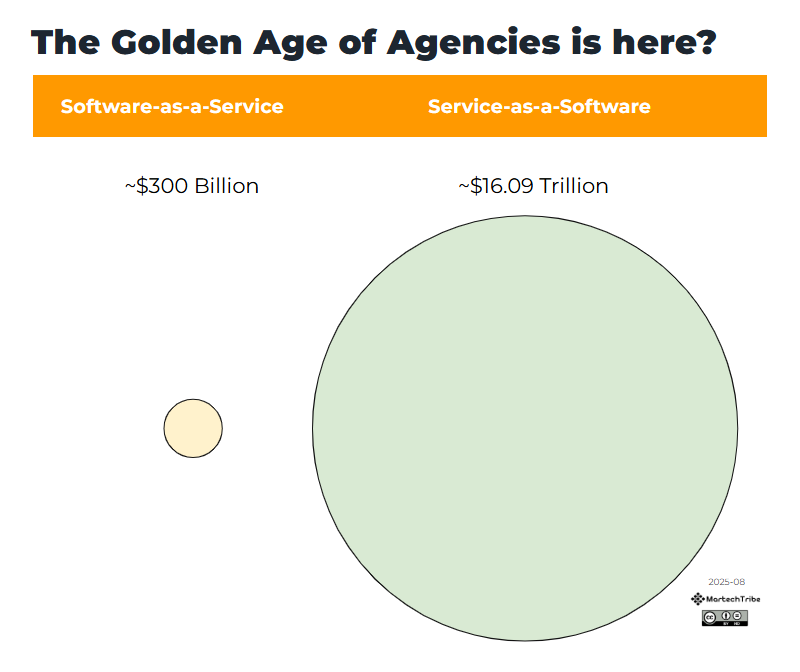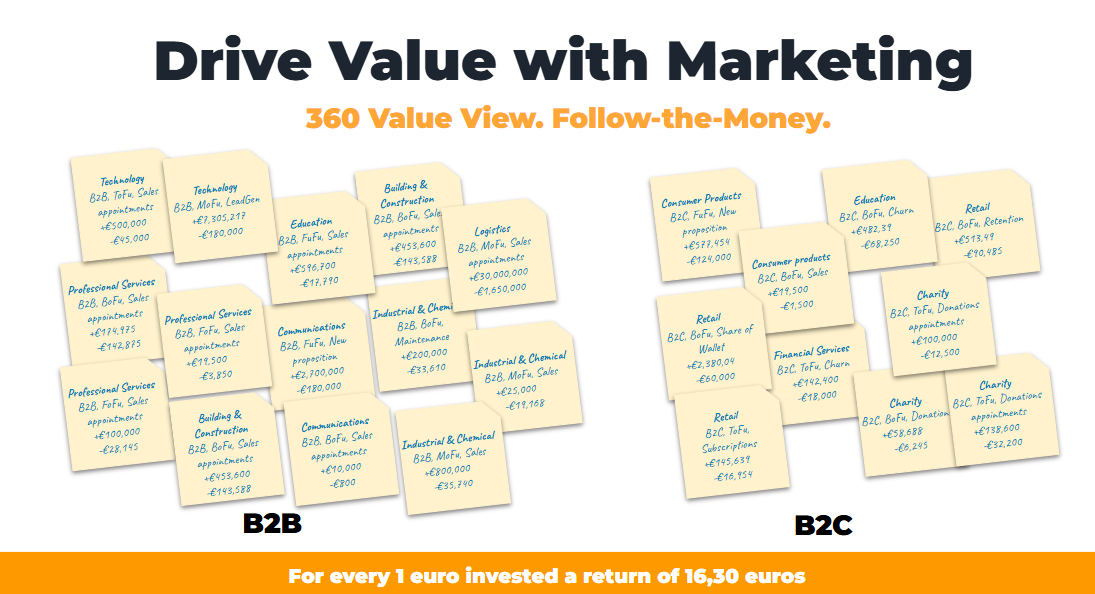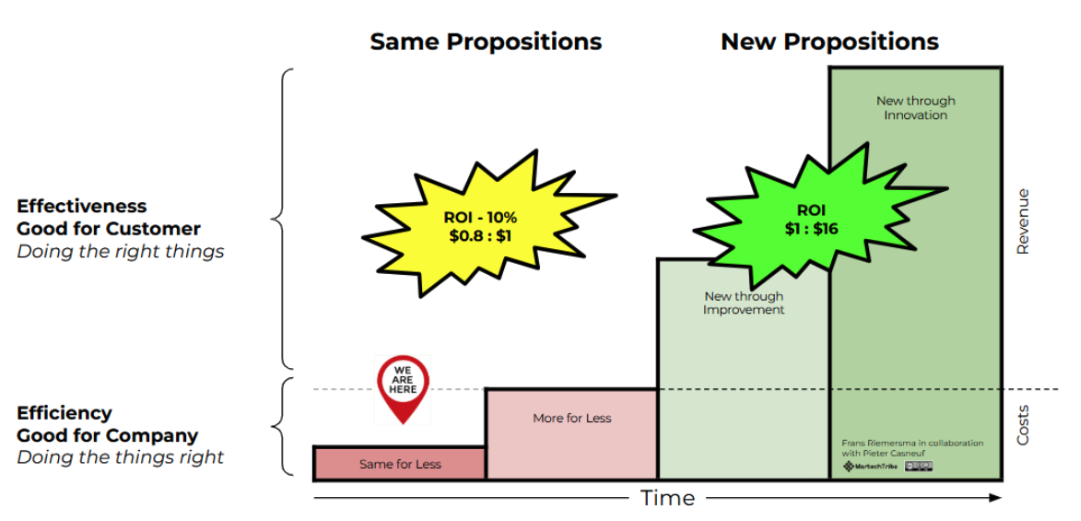
Manage your Content and Ads like a pro. Optimize your Martech stack in three steps. Learn what tool combinations other companies are using to manage Content & Experience, and Advertising.
MarTech is becoming more popular every year. The famous Marketing Technology Landscape by Scott Brinker grows 50% every year. It now lists 7000 tools, which is quite a lot to wrap your head around… to say the least. But we’re here to help.

In our previous article, we listed some pretty glorious stats on which tools are most often used in MarTech stacks, and in which Marketing Technology Landscape category these tools fall. Take a look at the stats here.
Now, a few weeks later, we’ve gone one step further. We looked at the two most popular MarTech Landscape categories “Advertising and Promotion” and “Content & Experience” and discovered the most popular combinations of 4 tools the MarTech stacks consist of, for both categories.
The number of MarTech tools exploded. Impressive. Now what?
People often find the MarTech Landscape very striking... because it is. But after the initial “wow” moment, marketers don’t always know what to do with the information. They don’t know how to undertake action to improve their organization’s MarTech stack.
With the list of compact MarTech stacks below, you can really take action to improve your marketing capability right after you’ve finished reading. Your company’s MarTech infrastructure can be as good as the competition’s… or better. If you start stacking and adding tools right away, you’ll have something to show your boss before the end of the day.
The shortcut we didn’t take...
Before we get into the numbers we’ve found, here’s a note for statistics purists: no, we didn’t just multiply cumulative occurrence of specific vendors in all stacks. What does that mean? Have a look at the stats below. They show how often vendors are mentioned in 48 stacks that were submitted for the Stackies Awards in 2018.

To get the most popular 4 vendor stack in the Advertising and Promotion category, we could have taken the easy route and multiplied the percentages of Facebook, LinkedIn, Twitter and Google Adwords: 73% * 73% * 67% * 65% = 23%. But it would be too easy, and from a statistical point of view plainly wrong, to conclude that 23% of martech stacks use Facebook, LinkedIn, Twitter and Google Adwords together. Instead, we looked at every martech stack individually and counted which combinations of tools they actually use.
Now, onwards to the real numbers.
The most popular Advertising & Promotion MarTech Stacks
Here’s what we found.
As you can see on the top left 4-vendor stack in the picture below, 46% of the 48 MarTech stacks in the dataset use all four tools Facebook, LinkedIn, Twitter, and Google Adwords.

A total of 7 tools surface in the 15 most popular Ads & Promotion stacks. It’s worth your while to take a look at whether these 7 tools play a role in your organization. As far as we can see, these 7 tools do not replace each other. In fact they show synergy.
If your company is using these tools already, take a look at how well they are integrated. Surely, you want to get a complete picture of your customers’ journey across the different channels, right?
The most popular Content & Experience MarTech Stacks
In total, 10 tools surface in the 15 most popular Content & Experience stacks. Take a minute to try to imagine whether these tools play a role in your organization.Some of these tools can be substitutes for each other, like Marketo and Hubspot. The same applies to Moz and SemRush - one can substitute the other. You won’t find these tools alongside each other in one and the same stack. So if you are unhappy with one of those tools, now you know what popular alternatives are.
If you are happy with they tools you’re using now, take a look at how well they are integrated. Ask yourself if the exchange of customer data between these tools is up to par. If you’re using a combination of four tools, but they’re all entirely siloed off, you can’t really call it a martech stack…

The most popular MarTech vendors as they’re used in stacks
- Advertising & Promotion
You might have already figured out what channel is best for running your campaign ads and promotions. Often there is one dominant channel in the customer journey that you want to support and fuel with other channel.So we offer you a different angle to look at the most popular Advertising & Promotions stacks. Here is how the most often mentioned Advertising and Promotion tools are used in stacks. The list is sorted for Facebook, LinkedIn, Twitter, Google Adwords, and YouTube.


- Content & Experience
Here is how the most often mentioned Content & Experience tools are used in stacks. The list features Google Analytics, Salesforce, Wordpress, Adobe Creative Cloud, and Hubspot.
What strikes us, is that you could use the Content & Experience analysis like a checklist. You need all of the above tools, or a substitute for them. They pretty much operate as an integrated workflow around the customer.
You need Wordpress to run your website, Adobe Creative Cloud to design the experience, Google Analytics to track the visitors, Mailchimp and Wistia to keep prospects engaged, Hubspot to convert them into leads and Salesforce to convert them into customers.
It’s all the tech you need to create relevant content and a flawless customer experience, to transform an initial idea into a business.

How to improve your own stack, now
We can imagine you can’t wait to undertake action and improve your own MarTech stack. Here are three steps to take.
- Check if you have covered the most popular Ads & Promotion tools Of course, only consider tools that make sense for your business model.
- Check whether alternative Content & Experience tools are available.
- Check the tool integration level, i.e. if the vital customer data is shared across the different tools.
To make your life even easier, we built a MarTech stack benchmark tool with which you can analyse your stack within 3 minutes.
When you fill out which tools you use and how you use them, you will receive your automatically generated, personalized report instantly. The report will explain what the maturity of your marketing technology stack is, and which tools can serve as alternatives to your current tools, if you want to improve your stack.




